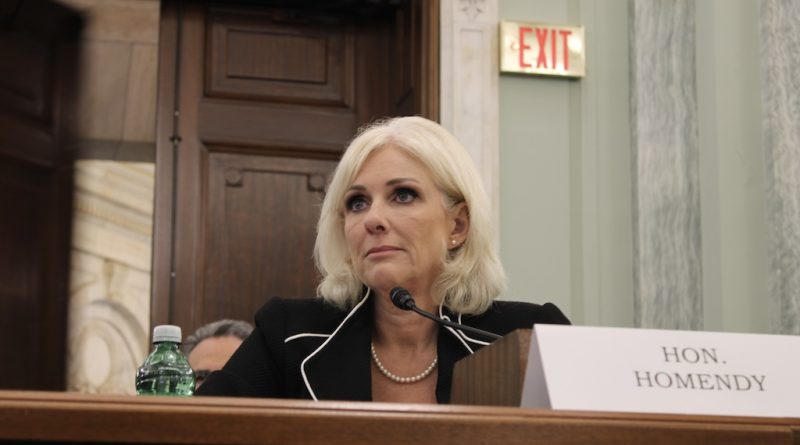NTSB: Probe of plane door incident hampered by lack of Boeing documents
By TORRENCE BANKS
Capital News Service
WASHINGTON – The head of the federal agency investigating the door plug that blew off of a Boeing 737-MAX 9 in mid-flight in January testified Wednesday investigators do not yet have key documents from the aircraft manufacturer.
Jennifer Homendy, chair of the National Transportation Safety Board (NTSB), told a Senate Commerce, Science and Technology Committee hearing that Boeing has not provided her agency with documentation that it has requested regarding the incident involving Alaska Airlines Flight 1282. Included in the requested records are the names of the 25 employees who were responsible for the doors at the company’s production facility in Renton, Washington.
“Well, it’s beyond disappointing,” said Washington Sen. Maria Cantwell, a Democrat and chairwoman of the panel. “We have an entire economy that depends on people getting this right. And I thought that the CEOs have been cooperating for us.”
Without the list, Homendy said that the agency has used emails and text to piece together when the work on the door took place. However, investigators haven’t been able to interview anyone on the team responsible for working on the doors.
“We’ve asked for the records with respect to what occurred,” Homendy said. “We’ve asked for what shift it occurred on. And we think we know the days the work occurred on but that’s only because our investigators were looking at pictures and emails to try to get to the bottom of that information.”
“Well, I will say that is utterly unacceptable,” Sen. Ted Cruz, R-Texas, said about Boeing’s lack of assistance. “And the parties who are being investigated by NTSB need to cooperate fully. And Congress expects them to cooperate because you have an obligation to the American public at the bottom of what happened.”
Homendy said that the NTSB has been told that Boeing has a procedure for documenting when door plugs are opened, closed or removed. However, without the documentation to confirm that, Boeing opens itself to questions regarding its quality and safety management systems.
“There are two options,” Homendy said. “Either they (the documents) exist, and we don’t have them, or they do not exist, which raises several different questions.”
Boeing issued a statement in response to the hearing, saying: “We have now provided the full list of individuals on the 737 door team, in response to a recent request. With respect to documentation, if the door plug removal was undocumented there would be no documentation to share. We will continue to cooperate fully and transparently with the NTSB’s investigation.”
The company said that it had “worked proactively and transparently to fully support the NTSB’s investigation.”
“Our team works tirelessly with the NTSB team to respond comprehensively to all NTSB information requests and bring information to them that would be relevant to their investigation,” the Boeing statement said. “Early in the investigation, we provided the NTSB with names of Boeing employees, including door specialists, who we believed would have relevant information.”
The Alaska flight, with 171 passengers and six crewmembers aboard, departed from Portland, Oregon, on Jan. 5 bound for Ontario, California. At 14,000 feet, the left door plug blew out.
The plane suddenly opened to the air, and depressurized, creating a horrific scene that left passengers terrified. The pilot was forced to return to Portland International Airport for an emergency landing.
A preliminary NTSB report last month said investigators discovered that four key bolts securing the door plug were missing before the incident.
Since the incident, several passengers aboard the plane have filed lawsuits against Alaska Airlines and Boeing over the incident. In February, three passengers filed a $1 billion suit against the companies.

Capital News Service is a student-powered news organization run by the University of Maryland Philip Merrill College of Journalism. With bureaus in Annapolis and Washington run by professional journalists with decades of experience, they deliver news in multiple formats via partner news organizations and a destination Website.

